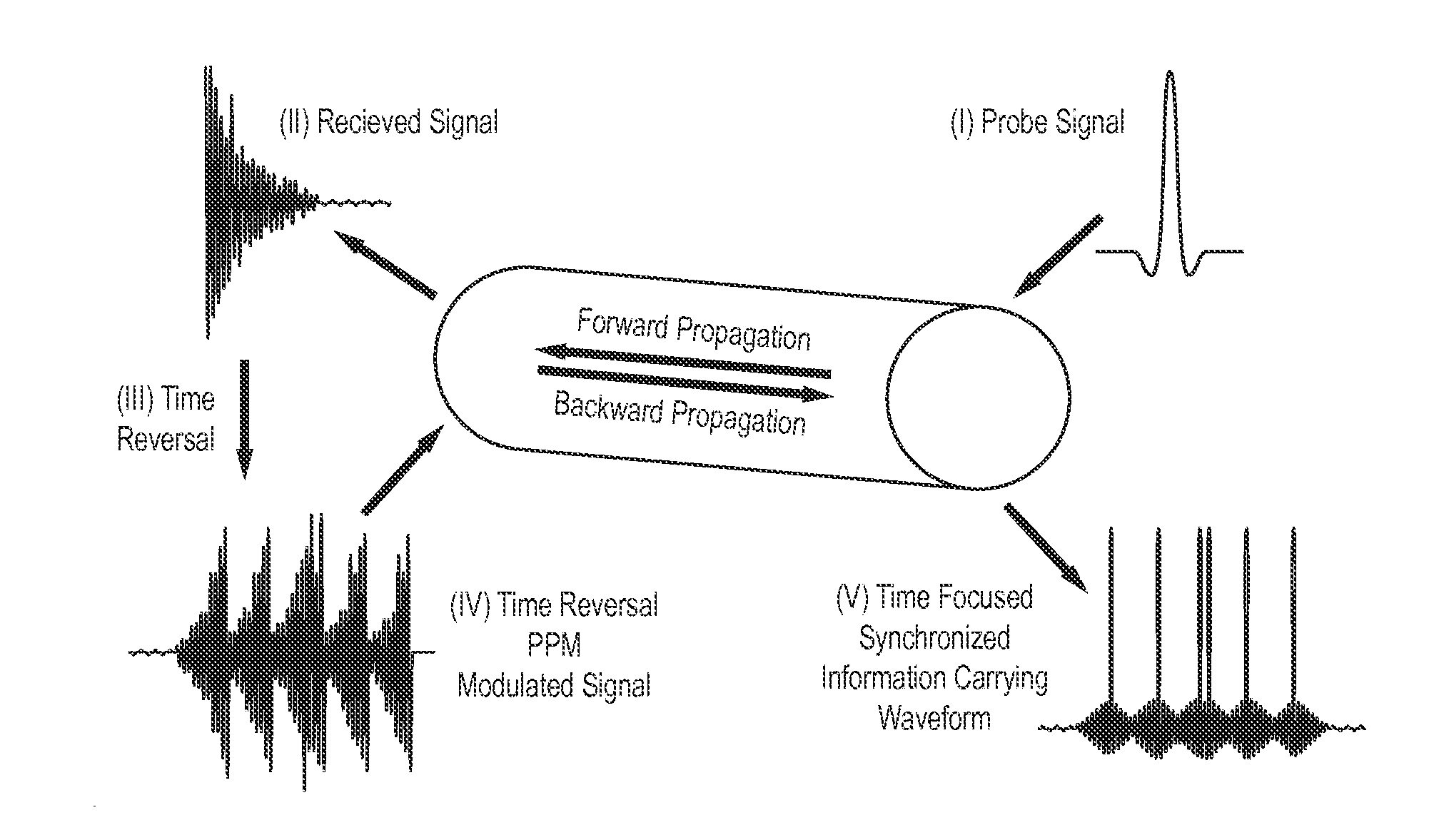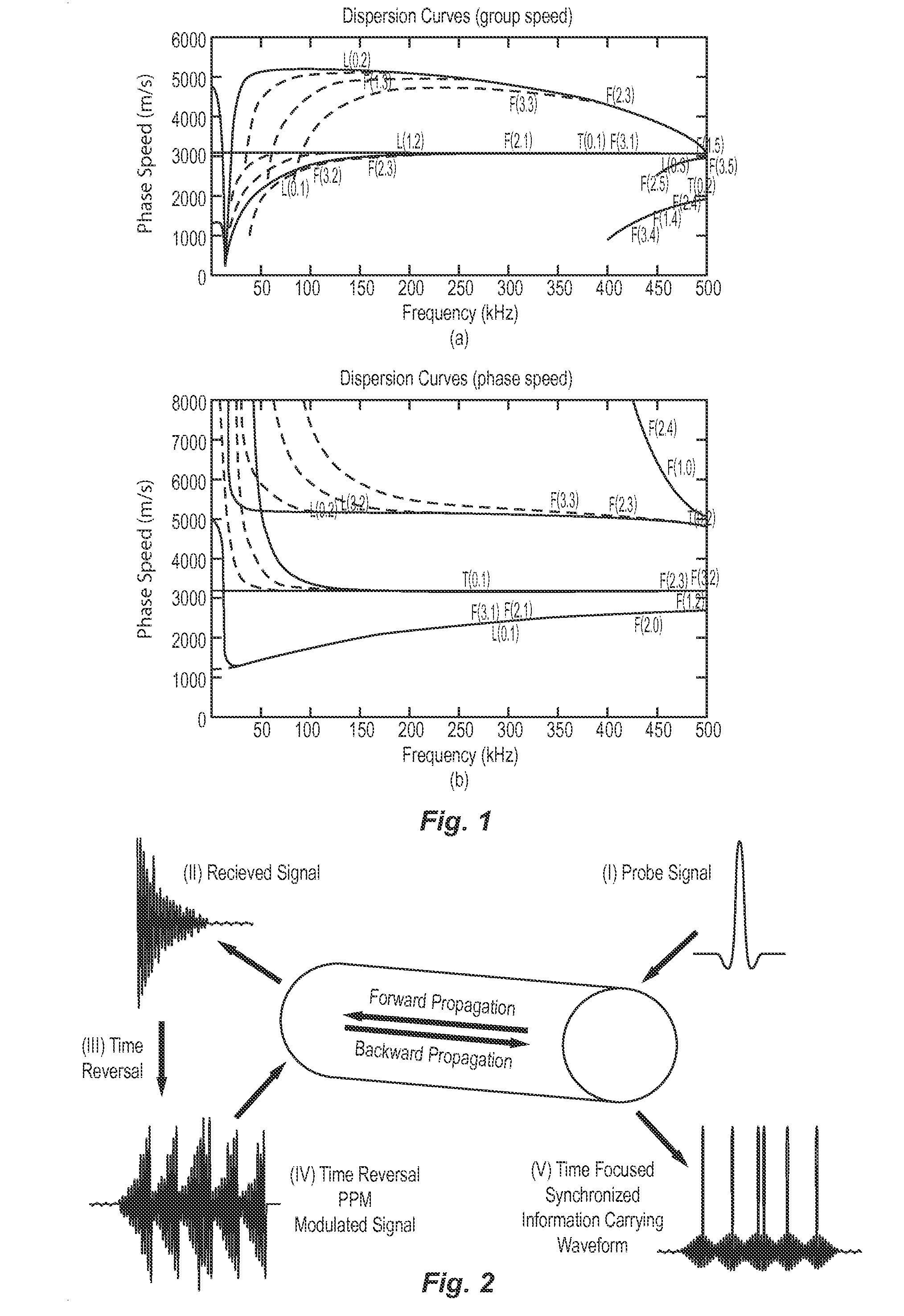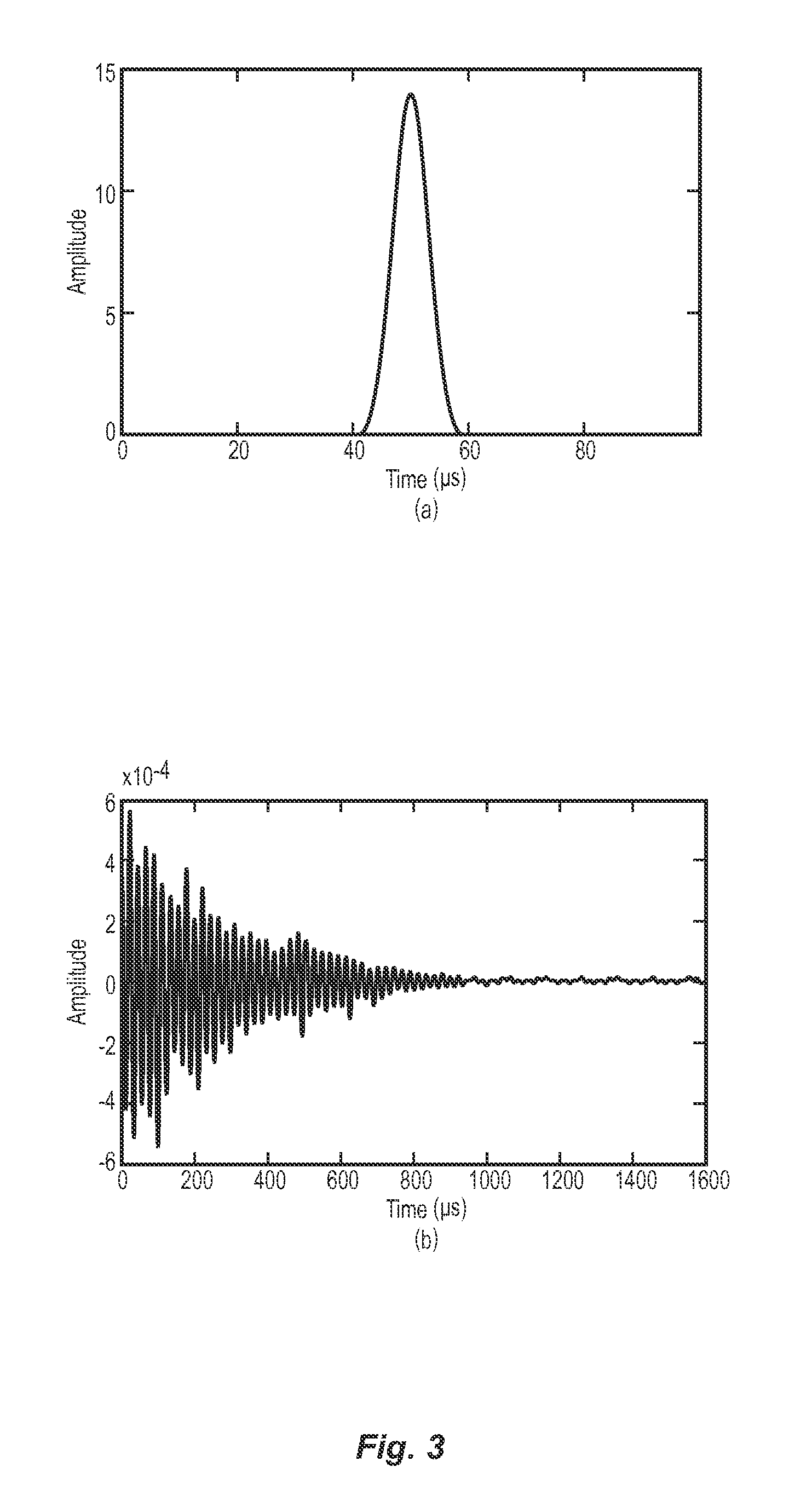System and method for time reversal data communications on pipes using guided elastic waves
a technology of time reversal and data communication, applied in the field of steel pipes, can solve the problems of inapplicability or undesirable of conventional communication schemes, short transmission range, and difficult realization of radio communication, and achieve the effects of low complexity, clean demodulation signals, and effective inter-sensor communication
- Summary
- Abstract
- Description
- Claims
- Application Information
AI Technical Summary
Benefits of technology
Problems solved by technology
Method used
Image
Examples
Embodiment Construction
[0052]In the Summary and Brief Description of the Drawings sections above, in this Detailed Description, in the Claims below, and in the accompanying drawings, reference is made to particular features (including method steps or acts) of the present disclosure. It is to be understood that the disclosure in this specification includes combinations of parts, features, or aspects disclosed herein. For example, where a particular feature is disclosed in the context of a particular aspect or embodiment of the present disclosure, or a particular claim, that feature can also be used, to the extent possible, in combination with and / or in the context of other particular aspects and embodiments of the present disclosure, and in the disclosure generally.
[0053]The term “comprises” and grammatical equivalents thereof are used herein to mean that other components, ingredients, steps, acts, etc. are optionally present. For example, an article “comprising (or “which comprises”) component A, B, and C...
PUM
 Login to View More
Login to View More Abstract
Description
Claims
Application Information
 Login to View More
Login to View More - R&D
- Intellectual Property
- Life Sciences
- Materials
- Tech Scout
- Unparalleled Data Quality
- Higher Quality Content
- 60% Fewer Hallucinations
Browse by: Latest US Patents, China's latest patents, Technical Efficacy Thesaurus, Application Domain, Technology Topic, Popular Technical Reports.
© 2025 PatSnap. All rights reserved.Legal|Privacy policy|Modern Slavery Act Transparency Statement|Sitemap|About US| Contact US: help@patsnap.com



